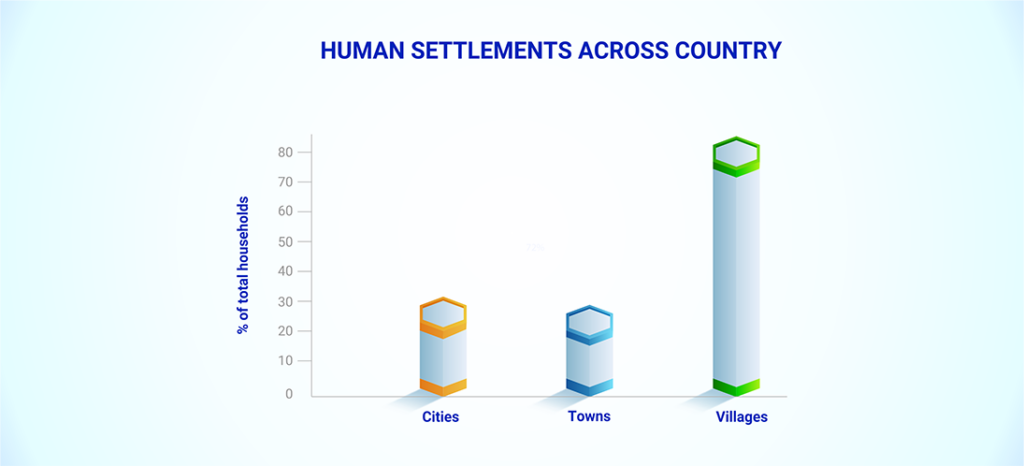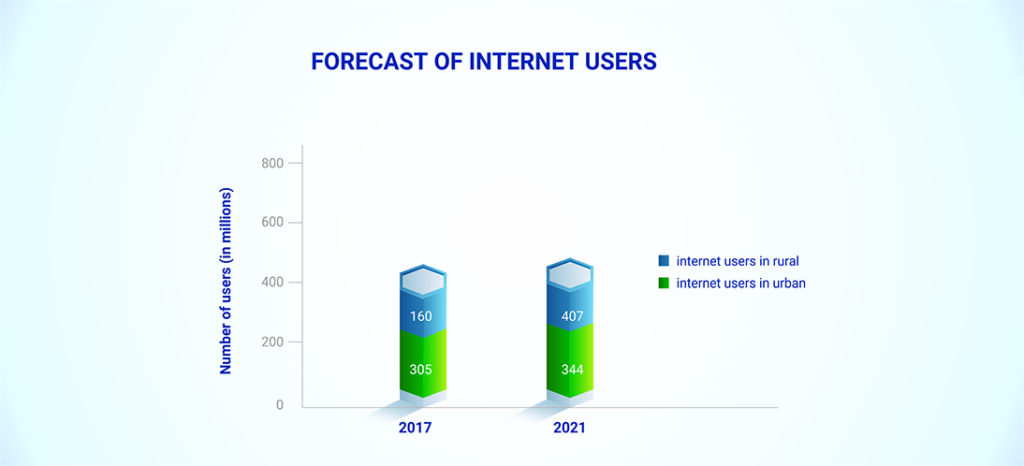Following the Covid-19 pandemic, the leaders of the leading industries have realized that the potential of the global supply chain has reached the pinnacle in the Indian urban areas. The explanation is straightforward; cities are becoming overcrowded, the cost of living is soaring, and when an unforeseen calamity like a pandemic strike, the entire structure collapses. Consequently, rural India is poised to emerge as the next significant phenomenon. Approximately 65% of India’s populace resides in villages, and according to the latest projections, this percentage is expected to remain nearly unchanged by the year 2050.

More money is usually spent on services and building things like roads and buildings in cities. MNCs choose cities with good logistics and IT, educational and financial infrastructure, and power and water facilities for Foreign direct investment (FDI).
Hence, governments typically make investments for the improvement of rural areas. Consequently, rural supply chains involving agro-products, handicrafts, toys, textiles, and apparels originate from villages and small towns with less advanced infrastructure and lifestyles.The outskirts of vital food and apparel supply chain networks are found in rural areas, regardless of whether they are local, urban, or global as the global supply chains traverse nations and may start in either urban or rural areas, contingent on the product. For example, American and European retailers source fruits, vegetables, meat, leather, and apparel products from rural areas in low-cost countries.
In our region, there’s a saying that “The impact of vegetable production in the Kunduli market resonates across the entire supply chain in India.” For those unfamiliar with Kunduli, it’s a weekly market in southern Odisha held every Friday. Initially, I, like many others, dismissed this statement as something farmers/traders say for amusement. However, considering the current state of the vegetable supply chain, I’ve come to realize that this statement holds some truth. I believe it applies not just to Kunduli but to all rural markets across India, potentially influencing the global supply chain. We often hear about farmers in rural areas discarding harvested crops due to a lack of demand, while the same products command high prices in urban and global markets. This highlights a significant disparity between the supply and demand of vegetables in the Indian market.
The rural market primarily accommodates two types of supply chains: one for food products and apparel, and another for toys and furniture items. In the agri-business sector, food processing units are typically small and predominantly concentrated in nearby urban areas. In recent budgets, the government has allocated a substantial budget for the advancement of SMEs, and the agri-business sector can undoubtedly capitalize on this development.
Prioritizing the integration of agri-business with SMEs is imperative for the following reasons:
- India boasts 12.4 million SMEs, making up 7 percent of the GDP, 35 percent of exports, and providing employment to over 29.5 million individuals.
- In India, over half, or 51 percent, of the land is cultivable. The country holds a top-five position in the global production of various agricultural products, including vegetables, fruits, milk, and animal husbandry. Despite these impressive figures, the revenue generated from these resources falls short of its optimal potential. While the demand for processed foods is on the rise, the food processing industry in India stands at a mere 1.6 percent, in stark contrast to countries like Thailand and Brazil, where it reaches 65-75 percent. Additionally, approximately 30 percent of agri-produce faces wastage.
- The retail landscape in India tells a dynamic tale, distinctly less saturated compared to global markets. Presently, there exist 12 million retail outlets employing 21 million individuals (constituting 7 percent of the total workforce). Notably, there are minimal entry barriers for significant players. While the organized retail segment in India is relatively modest at present, it holds immense market potential in both urban and rural areas.
Therefore, the current emphasis in India is on cultivating its regional rural and urban supply chains, seamlessly integrating them into the global value stream.
Another benefit of establishing a supply chain in rural areas is the accessibility of cost-effective real estate and an ample labor force. Setting up an agri-business plant or warehouse in rural markets proves to be significantly more economical compared to urban cities, and with efficient logistics, overall operations become much more cost-effective. Additionally, tapping into the potential of the rural female workforce can be advantageous. Since women in rural areas often manage household responsibilities, their work is characterized by efficiency, reliability, and cost-effectiveness.
Entering the digital age, the surge in mobile phone usage in rural areas, coupled with affordable internet packages, has propelled rural India into a significant consumer and supplier. E-commerce platforms now witness a higher volume of orders from rural regions compared to urban areas. According to WSJ, rural India has contributed over $400 billion in retail sales. E-commerce giants are strategically establishing logistics to cater to the vast 800 million population residing in rural India.

Only a handful of FMCG companies, including HUL and Dabur, have managed to establish a presence in these regions. The Government of India is actively facilitating SMEs and startups to venture into the rural market and foster its growth. Building the rural market’s integration into the global supply chain is a gradual process, reminiscent of the saying “Rome wasn’t built in one day.” Nevertheless, armed with past experiences, sufficient funding, and a robust pool of labor and talent, we have the tools for a successful outcome.
Rural Markets: Orchestrating Resilience in Global Supply Chains
In the symphony of global supply chains, the rural markets emerge as a powerful crescendo, harmonizing tradition with innovation. As we unveil their potential, it’s evident that these markets, often overlooked, hold the key to a sustainable and inclusive future. By integrating rural prowess, we not only fortify local economies but also compose a resilient melody that resonates across the global supply chain landscape.
Author: Dilip Kumar Sahu
Reference : Rural Supply Chain Networks: by N Viswanadham,
Subscribe to our blog and stay updated!
Share This Story, Choose Your Platform!





